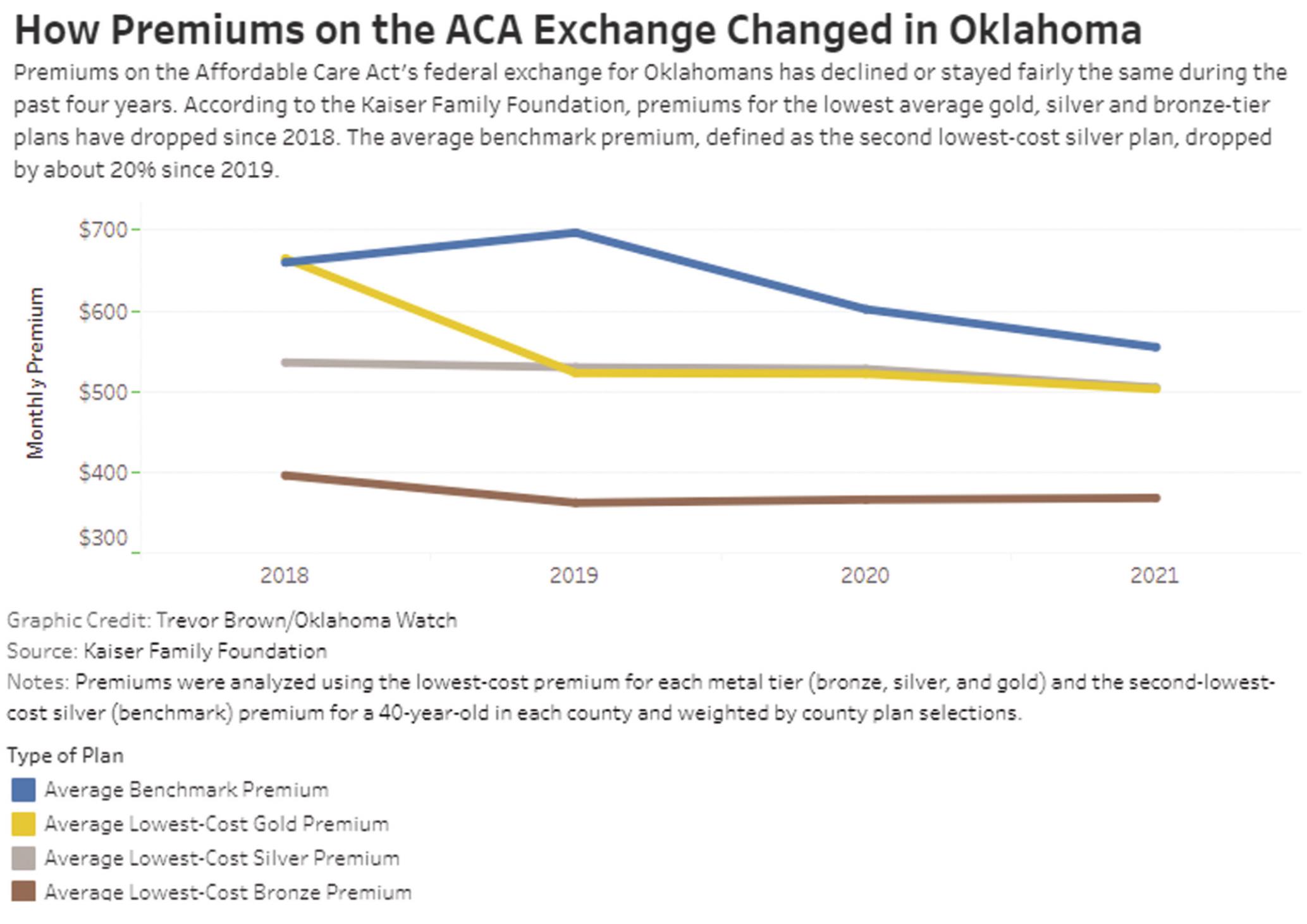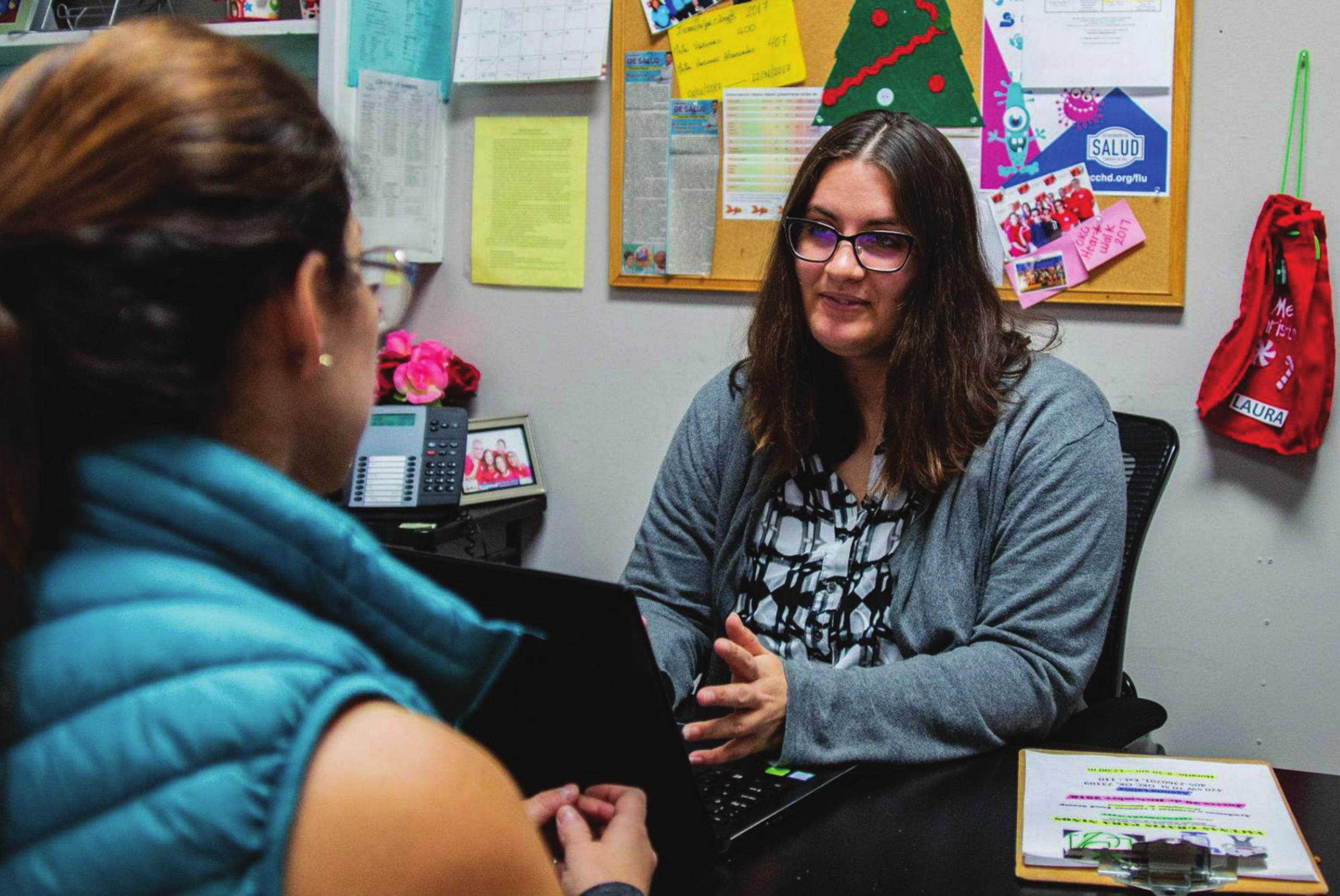Will COVID impact sign ups
Oklahomans will have more choices and the most affordable health insurance options in years through the Affordable Care Act’s marketplace.
Thanks in part to a record-number of insurers offering plans in Oklahoma for coverage which starts January 1, the average monthly benchmark premiums on the federal exchange are down more than 20 percent from a record high in 2019.
This is good news for health advocates who want to boost insurance rates during a time when COVID-19 has killed more than 260,000 and hospitalized more than half million across the country.
However experts and groups which assist consumers in selecting health care options say the ever-worsening pandemic has created new challenges in reaching residents and ensuring they sign up before the December 15 deadline.
“Because of the health restrictions, we are very limited in in-person meetings and meeting with individuals or groups we would usually be meeting with,” Steven Goldman, lead health navigator with the Legal Aid Services of Oklahoma said. “Typically we’d be meeting in libraries or churches, but this year it’s just not happening.”
The stakes for ensuring residents sign up for the often-heavily subsidized health insurance is especially high in Oklahoma, which has the nation’s second highest uninsured rate at 14.3 percent.
If that rate doesn’t improve, Oklahoma Insurance Commissioner Glen Mulready said many Oklahomans could be at risk since all indications show that the pandemic will continue to rage through at least the first part of 2021.
“Unfortunately it takes something like this for some folks to wake up and realize I really should be covering myself to protect me from these unexpected out-of-pocket costs,” he said.
Premiums down, offerings up
The positive news is many policies on the exchange may be more attractive to Oklahomans.
The three insurers — Blue Cross Blue Shield of Oklahoma, Bright Health and Medica Insurance Company — which offered individual health plans on the exchange, still commonly known as Obamacare, for the current year will be doing so again next year.
In addition, there will be two new entries for selected areas of the state: Oscar Health and UnitedHealthCare.
Before 2019, Blue Cross Blue Shield of Oklahoma was the only insurer which offered plans in the state.
For the second straight year, many of the plans will be cheaper than before.
According to an analysis from the Kaiser Family Foundation, which tracks state and federal health policies, Oklahoma’s average benchmark premiums will drop from a recordhigh of $696 per month in 2019 to $554 for the upcoming year.
Most consumers end up paying far less than those amounts, however, since federal subsidies cover much of the costs depending on someone’s income.
Premiums are also mostly dropping, or increasing modestly, across the rest of the nation.
Daniel McDermott, a research associate with the Kaiser Family Foundation, said it appears the elimination of the individual mandates, which would’ve placed a tax on residents who forgo insurance, and the expansion of short-term health plans have not hurt the marketplace as some feared.
A record 159,000 Oklahomans signed up for coverage in 2020. McDermott said such enrollment increases across the nation have helped stabilize the market, particularly in states like Oklahoma that were seeing some of the highest rates in the country just a few years ago.
“I think what you are seeing is that consumers just really want coverage, especially subsidized coverage, if they can get it,” he said.
The entry of more affordable plans comes after many feared President Donald Trump, who has repeatedly railed against former President Barack Obama’s signature health policy, would seek to damage the exchange.
But Mulready, a Republican, said he believes the stabilization of the marketplace came from more of a “natural process” now that it has been more than a decade since the Affordable Care Act was passed.
“I think we just really haven’t had enough time for everything to settle down and for people to price these products properly,” he said.
Challenges due to COVID-19
As COVID-19 continues to highlight the importance of health insurance, the spread of the virus is also making it harder to get people enrolled.
Much of that work this year falls on the Legal Aid of Oklahoma, which for the second year in a row is the sole organization that was awarded a federal contract to help get Oklahomans enrolled.
Due to cuts to the program by the Trump administration, the group received about $373,500 this year to lead the outreach efforts. That represents a nearly 68 percent drop from the $1.2 million two groups were awarded to serve as navigators in 2016.
Goldman, who is spearheading the navigator’s work through the Legal Aid of Oklahoma, said COVID-19 restrictions are also hampering their efforts.
Goldman said one of the most effective tactics for reaching hard-to-reach or vulnerable communities has been through inperson events where residents are invited to work one-on-one with the navigators.
This year navigators have resorted to trying to set up or join Zoom calls along with other health organizations, he said, or just being available by phone, at (405) 313-1780 or through their online portal at myOKplan.org.
“You just can’t replace that person-to-person contact though with something as personal as health,” he said.
With thousands losing their jobs, seeing their pay cut or moving into new careers, Goldman said one of their purposes is to help Oklahomans find out if they are eligible for significant federal subsidies.
“We are finding people are very concerned about their health right now,” Goldman said. “However they also are concerned about their personal economy and that’s making them hesitant to make the decision about health insurance.”
Mulready said the Oklahoma Insurance Department is also seeking to connect with Oklahomans through different ways. This includes fielding calls from the department’s consumer-assistance hotline and advertising the open enrollment period though social media and newspaper editorials.
With so many distractions, he added it’s important for Oklahomans to be aware of the December 15 deadline so they don’t get locked out of getting coverage.
“Without having some sort of other qualifying event beyond the openenrollment period, they won’t be able to access these products,” he said. “There are other products out there, such as the short-term health plans, but nothing as comprehensive as what’s offered on the marketplace.”



